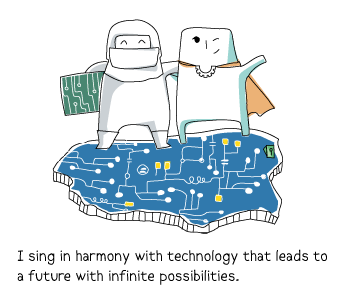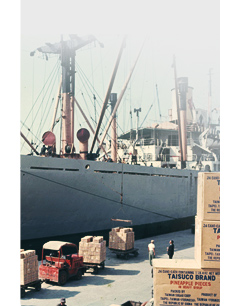|
 During the 1970s when Taiwan was experiencing the world’s first oil crisis and diplomatic difficulties, public confidence was weak, and the domestic economy was filled with gloom. Prime Minister Chiang Ching-kuo decided to develop high tech industries to boost the economy. Chiang, with a think tank comprising high ranking officials in economic and financial agencies, such as Sun Yun-xuan, Li Guo-ding, and Xu Xian-xiou, launched an integrated circuit program. In the beginning, the organizing team was not in agreement with Chiang regarding location. After a series of professional assessments, Hsinchu was chosen. It took the government two years to acquire the required land from the landlords. To make it easier for returning experts from abroad to become accustomed to life in Taiwan, the science park was designed to resemble Silicon Valley. Set up in 1980, Hsinchu Science Park is rather different from traditional industrial parks that tend to have a lot of chimneys; it is more like a huge park with trees. Today, it is clustered with IC companies. During the 1970s when Taiwan was experiencing the world’s first oil crisis and diplomatic difficulties, public confidence was weak, and the domestic economy was filled with gloom. Prime Minister Chiang Ching-kuo decided to develop high tech industries to boost the economy. Chiang, with a think tank comprising high ranking officials in economic and financial agencies, such as Sun Yun-xuan, Li Guo-ding, and Xu Xian-xiou, launched an integrated circuit program. In the beginning, the organizing team was not in agreement with Chiang regarding location. After a series of professional assessments, Hsinchu was chosen. It took the government two years to acquire the required land from the landlords. To make it easier for returning experts from abroad to become accustomed to life in Taiwan, the science park was designed to resemble Silicon Valley. Set up in 1980, Hsinchu Science Park is rather different from traditional industrial parks that tend to have a lot of chimneys; it is more like a huge park with trees. Today, it is clustered with IC companies.
*From June 1,1972 to May 19, 1978, Chiang Ching-kuo was in the office of prime minister. In 1974, Xu Xian-xiou was head of National Science Council, Li Guo-ding was a minister without portfolio, and Sun Yun-xuan was Minister of Economic Affairs.
*At the beginning, Chiang Ching-kuo had intended to pick Longtan as the location for the science park, which was not in agreement with the organizing team. Finally with the support and professional evaluation of Sun Yun-xuan, the location near National Tsing Hua University, National Chiao Tung University, and Industrial Technology Research Institute was finally chosen. However, during the time of land acquisition, the government confronted strong opposition from local Hakka tea farmers who would strongly fight for their homeland even it was during the martial law period. With two years of efforts and the coordination of magistrate Lin Bao-ren, the land was finally acquired.
|
